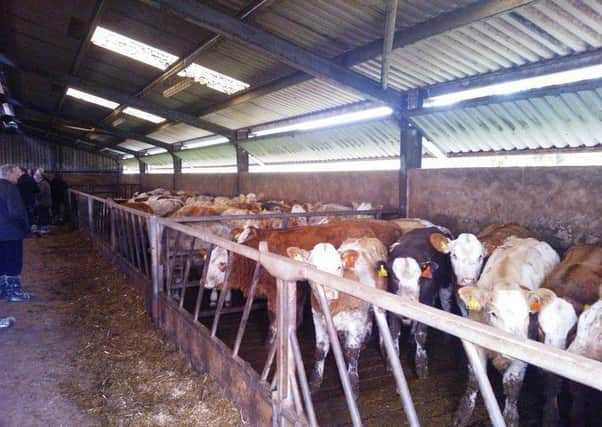DAERA Management Notes: Beef and sheep


There are a number of suitable products for control but make sure the one you choose controls both biting and sucking lice. It may take up to four to five weeks to clear the lice and subsequent eggs. Treat all animals in the one housing area at the same time.
Soils
Soils have two major components, soil solids and pore space. Ideally soil solids should be made up of 45% mineral matter (sand, clay, silt etc.) and 1-5% organic matter. Pore space is made up of water and air and both should be between 20 and 30% in a healthy soil. This is important as an imbalance can result in an unhealthy soil. The level of organic matter affects liming requirements as each soil type has a different target pH as shown in the table below. The maximum single application rate of lime is also different on these organic and peaty soils. A good analysis company should take account of this in the soil analysis.
Advertisement
Hide AdAdvertisement
Hide AdWhen comparing liming materials cost per tonne is irrelevant, they should be compared on a cost per unit of neutralising value (NV). For example ground limestone has an NV of 50 and costs £20/t delivered and spread. Liming material A appears cheaper at £17/t delivered and spread but has an NV of 30. Ground limestone costs 40p per unit of NV (20x100p/50) and material A costs 57p per unit of NV (17x100p/30). Therefore provided they both have the same physical characteristics the ground limestone is more cost effective.
Lamb survival
Lamb numbers are key to profitability, therefore lamb survival during and after lambing is critical. From recent surveys the majority of losses at lambing (50%) are due to management before lambing and only extra labour and cost can minimise these losses. The majority of losses are due to stillbirths, infectious abortions, dystocia and trauma, lambs being too big or small and ewe death before or during lambing.
During lambing
Mis-mothering also scored highly as a reason for lamb losses. Avoid disturbing or alarming ewes immediately after lambing, ewe lambs and yearlings may react differently and therefore need special care. Some ewes are consistently poor mothers and this should be taken into account in culling decisions. A ewe should have a strong licking instinct to help minimise suffocation in unattended births.
Colostrum intake is crucial in preventing hypothermia and disease. As a rule of thumb intake should be 250 ml per kilogramme of bodyweight in the first 24 hours. Milk from well fed ewes with a single lamb can be kept as a reserve for other lambs.
Advertisement
Hide AdAdvertisement
Hide AdCommon infections after birth are watery mouth, navel ill and joint ill. The importance of pen cleanliness and an abundance of bedding cannot be overemphasised. Joint ill is usually caused by the ingestion of bacteria from the ewe’s teat and therefore cleanliness before lambing is also important. To minimise navel ill treat the navel with strong veterinary grade iodine 15 minutes after birth and again two to four hours later.
After the first three to four days the ability of lambs to survive is affected by disease, weather, predation, accident/misadventure and abandonment. Field selection for the youngest lambs is vital and you should consider; is shelter available, is the fencing adequate, what is the likely worm burden in the field?